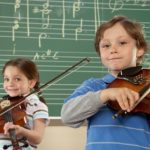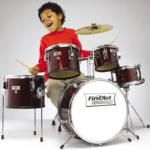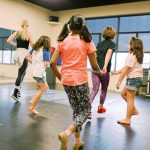Unlocking Potential: How Music and Dance Lessons Boost Brain Development
The joy of music and the rhythm of dance are more than just creative outlets; they’re powerful tools for nurturing young and developing minds. Engaging in music and dance lessons has profound effects on brain development, unlocking cognitive, emotional, and physical benefits. Whether you’re considering classes for your child or exploring these activities as an adult, understanding how they shape the brain can inspire you to take the leap.
The Science Behind the Arts
Numerous studies have shown that music and dance lessons activate multiple areas of the brain simultaneously. Playing an instrument or learning choreography requires coordination, memory, focus, and creativity, all of which contribute to a well-rounded mental workout.
- Neuroplasticity: Learning music or dance promotes neuroplasticity, the brain’s ability to form and reorganize synaptic connections. This flexibility enhances problem-solving skills, adaptability, and learning capacity.
- Cross-Hemispheric Communication: Activities like playing an instrument or performing dance routines improve communication between the brain’s hemispheres. This strengthens cognitive abilities such as spatial reasoning, critical thinking, and language processing.
Key Cognitive Benefits
- Improved Memory: Learning to read sheet music or memorize choreography enhances working memory. This benefit translates to academic success, as students can retain and apply information more effectively.
- Enhanced Language Skills: Musical training, especially in early childhood, improves phonological awareness and language acquisition. Rhythm patterns in music help with understanding sentence structure and intonation in speech.
- Better Attention and Focus: Practicing an instrument or dance routine demands sustained concentration. Over time, this trains the brain to maintain focus, even in distracting environments.
Emotional and Social Growth
Beyond cognitive development, music and dance nurture emotional intelligence and social skills:
- Stress Reduction: Engaging in creative activities reduces cortisol levels, promoting a sense of calm and well-being.
- Empathy and Emotional Expression: Through music and movement, students learn to interpret and express emotions, fostering greater empathy and emotional awareness.
- Teamwork and Collaboration: Group lessons or performances teach cooperation and communication, building social connections and confidence.
Physical Benefits That Impact the Brain
Dance, in particular, combines physical exercise with artistic expression. Physical activity increases blood flow to the brain, improving cognitive function and mood. Additionally, learning complex dance routines enhances motor coordination and kinesthetic intelligence, which is linked to improved learning in other areas.
A Lifelong Gift
The benefits of music and dance lessons are not limited to childhood. Adults who engage in these activities often experience improved memory, reduced risk of cognitive decline, and a sense of fulfillment. For children and adults alike, the joy of mastering a new skill brings a confidence boost that spills over into other areas of life.
Getting Started
Whether it’s enrolling in piano lessons, picking up a guitar, or trying a ballet or hip-hop class, the first step is to explore options that align with your interests. If you’re a parent, consider exposing your child to a variety of musical instruments or dance styles to see what sparks their enthusiasm.
Music and dance lessons are more than hobbies; they’re investments in brain development and overall well-being. By embracing these creative disciplines, you or your child can experience the magic of growth through rhythm, melody, and movement. So, why wait? The benefits are lifelong, and the journey is filled with joy.
Signing up for lessons is easy!
- Send us more information about your goals
- Register with us now!
- Give us a call at (402) 576-5792



